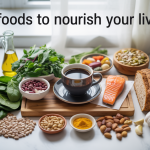Managing high blood pressure doesn’t have to be overwhelming, but knowing which foods to avoid can make a real difference in your numbers. If you’re dealing with hypertension or want to prevent it, certain everyday foods might be working against you without you realizing it.
This guide is for anyone with high blood pressure, those at risk, or people who simply want to protect their heart health through smarter food choices. We’ll walk through the biggest dietary culprits that can spike your blood pressure and give you practical alternatives.
We’ll cover high-sodium foods that spike blood pressure – including sneaky sources you might not expect – and explore how hidden sugars and harmful fats damage your cardiovascular system. You’ll also learn about alcohol’s impact on blood pressure control and discover heart-healthy food alternatives that can actually help lower your numbers naturally.
High-Sodium Foods That Spike Blood Pressure
Deli Meats and Processed Lunch Meats
Processed deli and lunch meats represent one of the most significant sodium threats in the modern diet. Manufacturers cure, season, and preserve these products with substantial amounts of salt, creating a perfect storm for blood pressure elevation. The numbers are staggering: just two slices of bologna contain 910 mg of sodium, while a single frankfurter delivers 567 mg. When you consider that a typical sandwich combines deli meat with bread, cheese, condiments, and pickles, the sodium content can easily skyrocket beyond healthy limits. This combination transforms what appears to be a simple lunch into a blood pressure-spiking meal that can undermine your cardiovascular health.
Frozen Pizza and Processed Cheese
Frozen pizzas pose a triple threat to blood pressure management, containing high levels of sugar, saturated fat, and especially sodium. The cheese alone contributes significantly to the problem—two slices of American cheese pack 512 mg of sodium. Manufacturers deliberately add excessive salt to frozen pizzas to maintain flavor after the cooking and freezing process. The results are alarming: one 12-inch pepperoni pizza cooked from frozen contains 3,140 mg of sodium, surpassing the American Heart Association’s daily limit of 2,300 mg in a single meal. As a heart-healthy alternative, consider making pizza at home using homemade dough, low-sodium cheese, and fresh vegetables to control your sodium intake.
Pickled Foods and Preserved Vegetables
The preservation process inherently requires salt to prevent decay and extend shelf life, making pickled foods particularly problematic for blood pressure control. The longer vegetables remain in their canning and preserving liquids, the more sodium they absorb into their cellular structure. Even a small pickled cucumber contains 448 mg of sodium—nearly 20% of your daily limit in just one small vegetable. While reduced-sodium options for pickled foods are becoming more available, it’s important to read labels carefully and consider fresh alternatives when possible.
Canned Soups and Packaged Broths
Canned soups, broths, and stocks are notorious sodium bombs that can dramatically elevate blood pressure with just one serving. One can of tomato soup delivers 1,110 mg of sodium, while a can of chicken and vegetable soup contains an astounding 2,140 mg—nearly your entire daily allowance. These processed liquids rely heavily on sodium for flavor enhancement and preservation. To protect your cardiovascular health, choose low or reduced-sodium soup options, or better yet, make your own soups from fresh ingredients where you can control the salt content.
Canned Tomato Products and Sauces
Most canned tomato sauces, pasta sauces, and tomato juices are loaded with sodium and can significantly raise blood pressure levels. One serving of marinara sauce (135 grams) contains 566 mg of sodium, while a cup of tomato juice delivers 615 mg. These products often contain added salt for flavor enhancement and preservation purposes. Fortunately, low or reduced-sodium versions are available in most grocery stores. For the best heart-healthy option, use fresh tomatoes, which are naturally rich in lycopene and offer additional cardiovascular benefits without the excessive sodium content.
Hidden Sugar Sources That Elevate Blood Pressure
Sugar-Sweetened Beverages and Drinks
Sugar-sweetened drinks represent one of the most significant yet overlooked threats to blood pressure control. These beverages are a major contributor to weight gain in both adults and children, which directly impacts cardiovascular health. When you consume sugary drinks regularly, you’re not just adding empty calories to your diet—you’re setting the stage for weight gain that can elevate your blood pressure readings.
The connection between these beverages and hypertension operates through multiple pathways. Sugar can increase blood pressure by contributing to weight gain, as overweight and obesity significantly increase the risk of developing high blood pressure. Additionally, added sugar may have a direct effect on increasing blood pressure, independent of its role in weight gain.
High-Sugar Processed Foods and Snacks
Processed foods present another major source of hidden sugars that can sabotage your blood pressure management efforts. Items like frozen pizzas contain surprisingly high amounts of added sugars, while obvious culprits such as maple syrup, candy, and jelly pack concentrated sugar loads that can quickly push you over healthy daily limits.
The impact of reducing these high-sugar processed foods can be remarkable. A 2019 study involving females with high blood pressure demonstrated the powerful effect of sugar reduction. Participants who decreased their sugar intake by just 2.3 teaspoons daily experienced an impressive 8.4 mm Hg drop in systolic blood pressure and a 3.7 mm Hg decrease in diastolic blood pressure.
Daily Sugar Limits for Heart Health
Understanding and adhering to recommended sugar limits is crucial for maintaining healthy blood pressure levels. The American Heart Association (AHA) provides clear guidelines for daily added sugar consumption: females should limit their intake to 6 teaspoons (25 grams) per day, while males should stay within 9 teaspoons (36 grams) daily.
These limits may seem generous, but they can be quickly exceeded when consuming processed foods and sugar-sweetened beverages. A single can of soda often contains the entire daily recommended amount of added sugar, making it essential to read labels carefully and make informed choices about your sugar consumption.
Harmful Fats That Damage Heart Health
Saturated Fats from Animal Products
Saturated fats pose a significant threat to cardiovascular health by increasing levels of LDL cholesterol in the blood. These harmful fats are primarily found in animal products, making it crucial to identify and limit these sources in your diet. Full-fat milk and cream, butter, red meat, and chicken skin are among the most common sources of saturated fats that can compromise heart health.
The American Heart Association (AHA) recommends reducing saturated fat intake to help keep the heart healthy, particularly for individuals managing high blood pressure. This recommendation stems from the direct correlation between saturated fat consumption and elevated cholesterol levels, which can contribute to arterial damage and increased blood pressure.
To combat this dietary challenge, replacing some animal foods with plant-based alternatives offers a heart-healthy solution. Nuts, seeds, olive oil, and avocado serve as excellent substitutes that can help reduce saturated fat intake while providing beneficial nutrients for cardiovascular health.
Trans Fats in Processed Foods
Trans fats represent an especially dangerous category of fats that have been linked to poor heart health outcomes. These harmful fats increase the risk of heart disease, stroke, and type 2 diabetes, making them particularly concerning for individuals with high blood pressure. While trans fats have been removed from processed foods since 2018, it’s important to remain vigilant about their potential presence.
Packaged, pre-prepared foods often contain not only saturated fats but also high amounts of sugar, sodium, and low-fiber carbohydrates. This combination creates a perfect storm for cardiovascular complications, as these ingredients work together to elevate blood pressure and strain the heart.
The AHA strongly recommends reducing trans fat intake to maintain optimal heart health. By avoiding heavily processed foods and opting for whole, unprocessed alternatives, individuals can significantly reduce their exposure to these harmful fats.
High-Fat Dairy Products to Limit
Full-fat milk and cream are notable sources of saturated fats that the AHA recommends limiting for heart health. These dairy products can contribute to elevated cholesterol levels and potentially impact blood pressure management. However, the relationship between full-fat dairy and blood pressure is complex, as evidenced by conflicting research findings.
Interestingly, a 2015 study suggested that full-fat dairy does not raise blood pressure, creating some debate in the scientific community. Despite this finding, the prevailing medical consensus continues to recommend limiting high-fat dairy products as part of a heart-healthy diet, particularly for individuals with existing cardiovascular concerns.
When managing high blood pressure, it’s advisable to choose low-fat or fat-free dairy alternatives to minimize saturated fat intake while still obtaining essential nutrients like calcium and protein that dairy products provide.
Alcohol’s Impact on Blood Pressure Control
How Alcohol Raises Blood Pressure
Drinking too much alcohol can increase blood pressure through multiple mechanisms that directly impact your cardiovascular system. When you consume excessive amounts of alcohol, it triggers physiological responses that elevate blood pressure readings and put additional strain on your heart and blood vessels.
Beyond the immediate effects on blood pressure, alcohol consumption can also contribute to overweight and obesity, which significantly increases the risk of developing hypertension. Many alcoholic drinks are high in sugar and calories, making them a double threat for those managing blood pressure concerns. These empty calories can lead to weight gain, which creates additional pressure on the cardiovascular system.
Research from 2017 provides compelling evidence of alcohol’s impact on blood pressure levels. The study found a clear link between drinking less alcohol and lowering blood pressure among people who usually had more than two drinks each day. This research demonstrates that reducing alcohol consumption can have measurable benefits for blood pressure management.
For individuals without existing hypertension, limiting alcohol intake may help reduce the risk of developing high blood pressure in the future. This preventive approach is particularly important given the progressive nature of hypertension and its role as a silent contributor to cardiovascular disease.
Recommended Alcohol Limits for Hypertension
Now that we understand how alcohol affects blood pressure, it’s crucial to know the safe consumption guidelines. The American Heart Association (AHA) provides specific recommendations for alcohol intake that can help minimize the risk of blood pressure complications.
If you choose to drink alcohol, the AHA recommends limiting alcohol intake to two drinks per day for males and one drink per day for females. These guidelines are designed to balance the potential social and cultural aspects of alcohol consumption while minimizing cardiovascular risks.
It’s important to note that these limits represent maximum recommendations, not targets to reach. Many individuals with hypertension may benefit from consuming even less alcohol or abstaining entirely, depending on their specific health circumstances and response to treatment.
For those who find cutting back on alcohol difficult, consulting a doctor for advice is essential. Healthcare providers can offer personalized strategies, support resources, and medical guidance to help you reduce alcohol consumption safely and effectively.
Alcohol’s Interference with Blood Pressure Medications
Previously, we’ve discussed how alcohol directly affects blood pressure, but its impact extends beyond physiological effects to include dangerous interactions with medications. Alcohol can prevent blood pressure medications from working effectively through various drug interactions that compromise treatment outcomes.
These interactions can occur through multiple pathways, including altered drug metabolism, enhanced side effects, or interference with the medication’s intended mechanism of action. When alcohol interferes with blood pressure medications, it can lead to unpredictable blood pressure fluctuations and reduced treatment effectiveness.
The consequences of these drug interactions can be particularly serious for individuals who rely on medications to manage their hypertension. Inconsistent medication effectiveness can result in periods of poorly controlled blood pressure, increasing the risk of cardiovascular complications such as heart attack, stroke, or kidney damage.
With this in mind, it’s essential for individuals taking blood pressure medications to discuss their alcohol consumption openly with their healthcare providers. This conversation can help determine safe consumption levels, identify potential interactions, and adjust treatment plans accordingly to ensure optimal blood pressure management while maintaining medication effectiveness.
Heart-Healthy Food Alternatives That Lower Blood Pressure
DASH Diet Approved Foods
Previously, I’ve discussed the foods to avoid when managing high blood pressure. Now that we have covered the harmful dietary choices, let’s explore the evidence-based DASH diet approach. The DASH diet, which stands for “dietary approaches to stop hypertension,” is specifically recommended by the American Heart Association as a heart-healthy eating plan designed to manage blood pressure effectively.
This scientifically-backed dietary approach has demonstrated remarkable effectiveness in reducing blood pressure in both individuals with and without existing hypertension. The DASH diet operates on two fundamental principles: achieving 4,700 mg of potassium daily while simultaneously restricting sodium intake to a maximum of 2,300 mg per day.
The foundation of the DASH diet includes a diverse array of nutrient-dense foods. Fresh fruits such as apples, bananas, and strawberries provide essential vitamins and natural potassium. Vegetables like broccoli, green beans, and carrots offer fiber and vital minerals. Nuts including almonds and walnuts contribute healthy fats, while legumes and seeds such as kidney beans, lentils, and sunflower seeds provide plant-based protein.
Whole grains form another cornerstone, including whole wheat pasta, brown rice, and oatmeal. Low-fat dairy options like fat-free milk and reduced-fat cheese supply calcium without excess saturated fat. Lean proteins such as skinless chicken and fish complete the nutritional profile. Importantly, this eating plan specifically limits foods high in saturated fats, sugar-sweetened beverages, sugary foods, and alcohol.
Potassium-Rich Foods That Counter Sodium
With this foundation established, let’s examine how potassium specifically works to combat high blood pressure. Research consistently demonstrates that potassium plays a crucial role in reducing blood pressure among individuals with hypertension by directly offsetting the harmful effects of sodium in the diet.
The DASH diet’s target of 4,700 mg of potassium daily is strategically designed to maximize this protective effect. This essential mineral occurs naturally in many of the approved DASH foods, making it easier to achieve therapeutic levels through dietary choices rather than supplements.
Fruits serve as excellent potassium sources, with bananas and strawberries leading the way in both taste and nutritional value. These naturally sweet options help satisfy cravings while delivering substantial potassium content. Vegetables equally contribute to daily potassium goals, with broccoli and carrots providing significant amounts alongside their fiber and antioxidant benefits.
Nitrate-Rich Foods for Blood Pressure Reduction
Now that we understand potassium’s role, let’s explore another powerful category of blood pressure-lowering foods. Nitrate-rich foods offer a unique mechanism for cardiovascular protection, with beets and pomegranate juice standing out as particularly effective options.
These foods work through their natural nitrate content, which the body converts to nitric oxide, helping to relax blood vessels and improve circulation. Beyond their blood pressure benefits, these foods provide additional heart-healthy components including powerful antioxidants and dietary fiber, creating a comprehensive approach to cardiovascular wellness.
Low-Sodium Product Alternatives
Previously, I’ve emphasized the importance of reducing sodium intake. With this in mind, let’s explore practical alternatives for common high-sodium products that can seamlessly integrate into your daily meal planning.
When selecting canned or processed foods, prioritize products labeled as reduced-sodium, no-sodium, or no-salt-added varieties. These alternatives maintain flavor while significantly reducing sodium content.
For frozen pizza lovers, consider preparing homemade versions using fresh dough, low-sodium cheese varieties, and an abundance of vegetables. This approach allows complete control over sodium levels while increasing nutritional value.
Pickled foods need not be completely eliminated; reduced-sodium options are increasingly available in most grocery stores. Similarly, soup enthusiasts can choose low or reduced-sodium commercial varieties, or better yet, prepare homemade soups using fresh ingredients for maximum control over sodium content.
Tomato products, commonly used in cooking, are available in low or reduced-sodium versions. Alternatively, fresh tomatoes provide the same culinary versatility without added sodium, making them an excellent choice for sauce-making and general cooking applications.
Managing high blood pressure through dietary choices requires avoiding foods that can spike your levels and damage your cardiovascular health. By limiting high-sodium processed foods, hidden sugar sources, harmful saturated and trans fats, and excessive alcohol, you can significantly improve your blood pressure control. These dietary villains work together to elevate blood pressure through various mechanisms, from disrupting fluid balance to contributing to weight gain and arterial damage.
The good news is that heart-healthy alternatives are readily available and delicious. Focus on incorporating fruits, vegetables, whole grains, lean proteins, nuts, and legumes into your daily meals. Choose low-sodium or no-salt-added options when buying processed foods, and consider following proven eating plans like the DASH diet. Small changes in your food choices today can lead to meaningful improvements in your blood pressure and overall heart health, reducing your risk of serious cardiovascular complications down the road.














